Secondary Ion Mass Spectrometry (SIMS) - Ion microprobe Laboratory
- Home
- Instruments and Personnel
- Methods and Applications
- Project and Scientific Interests
- Pubblications

The Secondary Ion Mass Spectrometry (SIMS) is used to determine the chemical and isotopic composition of solid samples. All elements between hydrogen and uranium can be analyzed as minor and trace elements (typically in the range ppm-ppb), from the first atomic layers up to-tens-of-microns depth, on areas ranging from a few to tens of µm, with material consumption at ng-level.
Local microanalysis is accomplished by a column of primary ions (Ar+, O-, O2+, Cs+) at high-energy (in the range 5-17.5 kV) and three electrostatic lenses. This system can vary the ion probe diameter from < 3 µm to > 200 µm, while maintaining a high current density.
The bombardment on the surface causes the sputtering process, i.e., the emission of particles of the sample, in the form of atoms, molecules, mono-atomic ions, ion clusters, .... The SIMS analysis relies on the small fraction of secondary mono-atomic, positive or negative ions.
The secondary ions are filtered in energy and mass by a double focusing mass-spectrometer. By the energy filtering technique, the ions, emitted within a wide range of kinetic energies, are selected in the medium-high energy component, so to exclude complex molecular interfering ions that are most abundant in the low-energy region.
A unique feature of SIMS relative to other spectrometric techniques, is its ability to produce ionic images by collecting the secondary ions extracted from the area of bombardment.
INSTRUMENTS
The equipment supplied to the laboratory, consists of an ion microprobe Cameca IMS 4f (no.116), which was acquired in 1986 by the 05-CNR Committee in the frame of the Strategic Project of the National Research Council of Italy: Ion microprobe for advanced researches in the field of Earth Sciences.
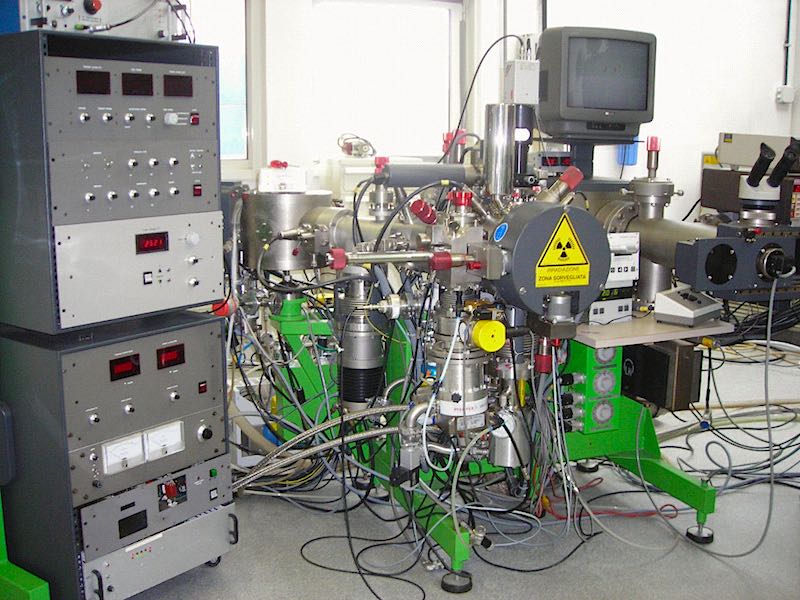
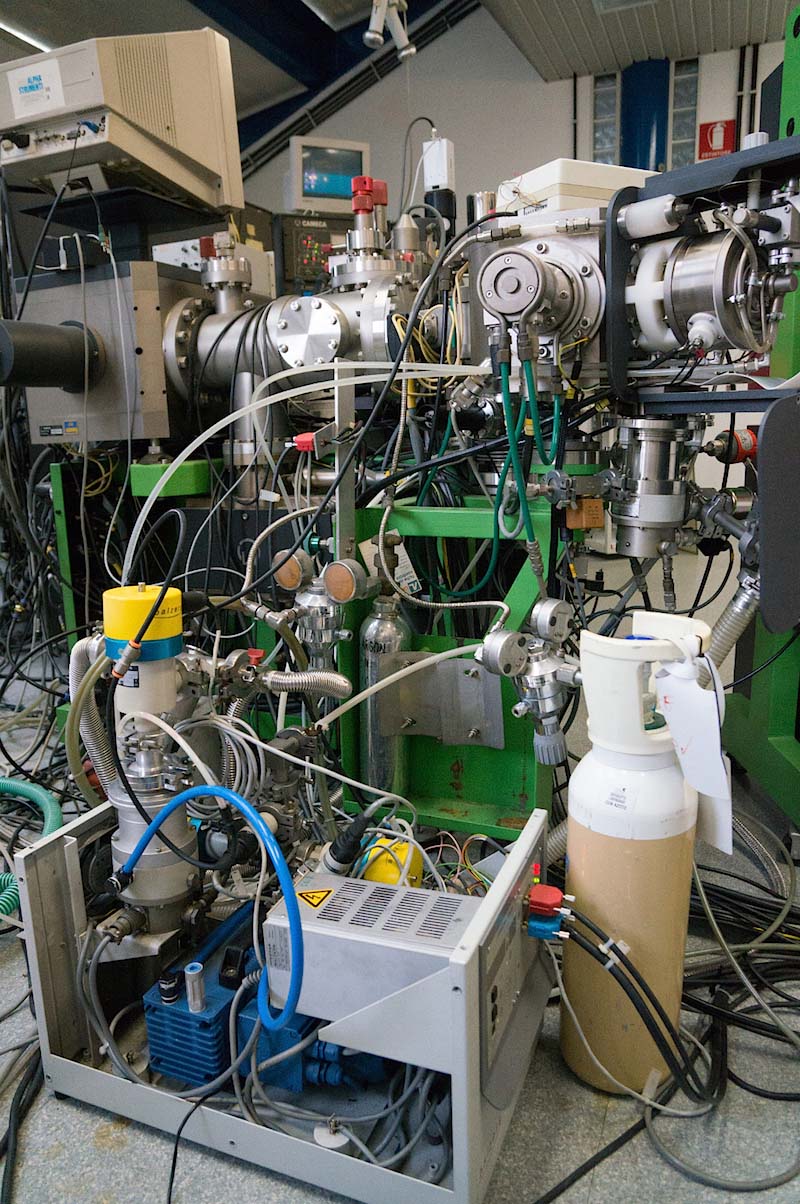
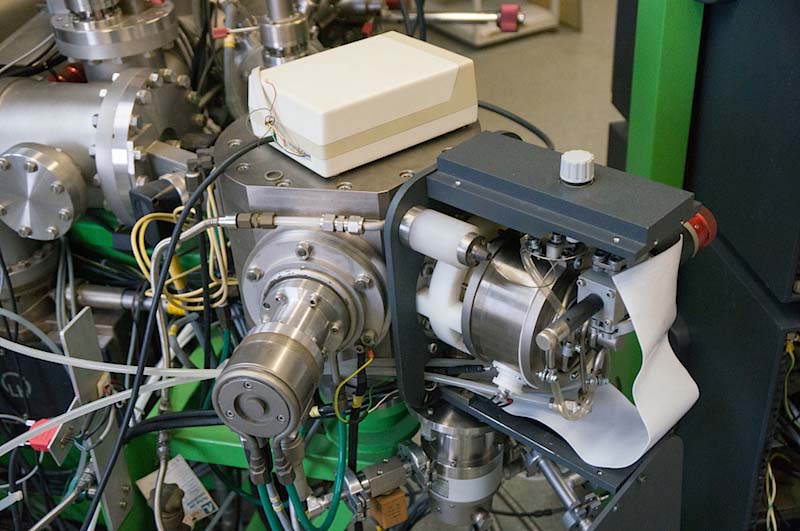

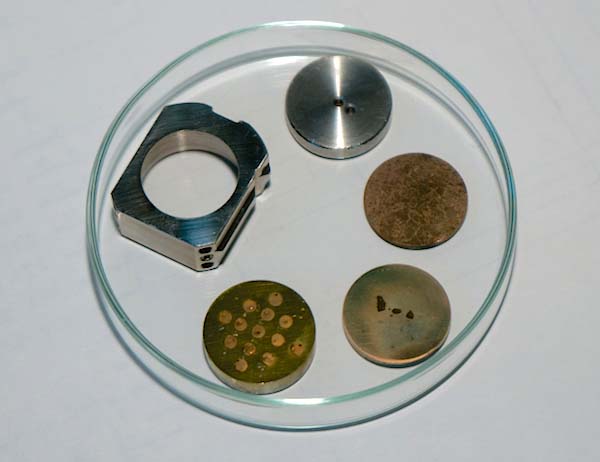
The samples are polished, washed in ultrasonic tank and subsequently coated with gold (Au) or platinum (Pt) to make their surface conductive. We note the sample holder supplied to the ion microprobe Cameca IMS 4f, and a metal cylinder to lock the preparation in its interior. The allowable dimensions are 2.54 cm diameter.
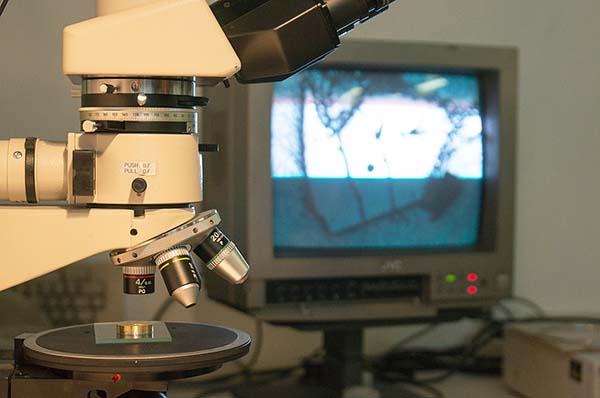
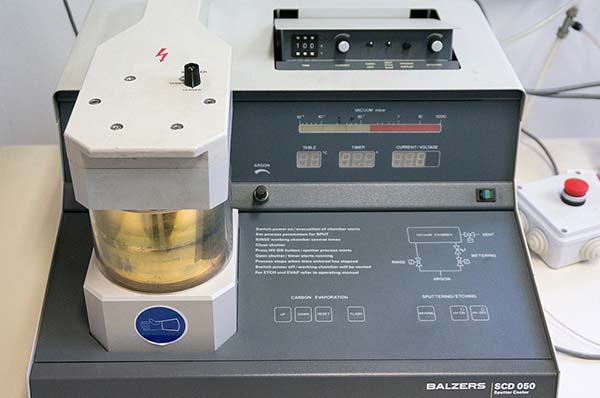
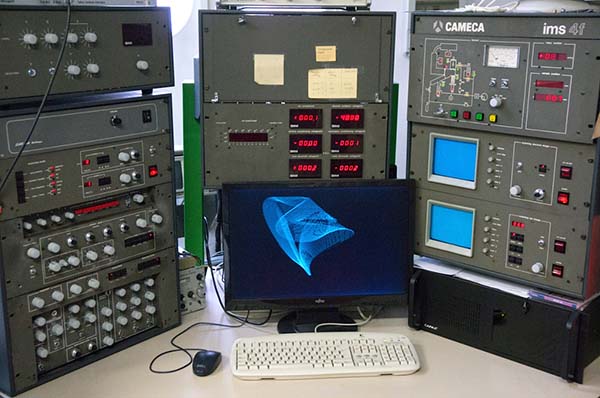
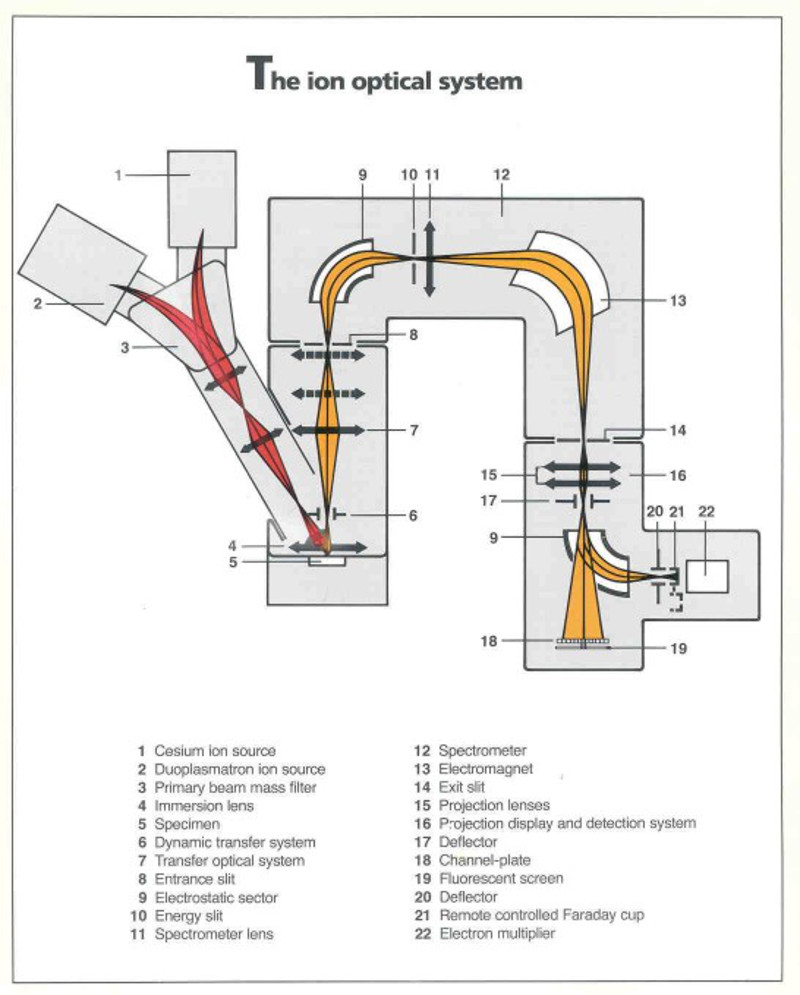
Electrostatic lenses extract and transport the secondary ions from the sample, while maintaining their mutual spatial relationships. The mass spectrometer (electrostatic+ magnetic field prisms) allows ion focusing in the radial and axial plane, and in the energy. The ionic, mass-resolved image, is magnified and transformed into an equivalent electronic image, which is visible on a fluorescent screen. The ionic currents are measured on a Faraday cup or an electron multiplier.
STAFF
Dr. Alberto Zanetti (CNR Researcher - Head of Laboratory)
Marco Palenzona (CNR Technician - Instruments Maintenance)
Roberto Gastoni (CNR Technician - Sample Preparation)
CONTACTS
Phones:
0382 985867 (Dr. Alberto Zanetti)
0382 985798 (Marco Palenzona)
0382 985906 (Roberto Gastoni)
E-mail:
alberto.zanetti(at)igg.cnr(dot)it
marco.palenzona(at)igg.cnr(dot)it
roberto.gastoni(at)igg.cnr(dot)it
METHODS AND APPLICATIONS
Since the birth of the ion microprobe lab. in Pavia, the development of SIMS procedures has been addressed to the quantitative analysis of elements, some of them, as H, un-analyzable in situ by means of conventional spectrometric techniques.
The adopted analytical techniques are based on the energy filtering and on the use of reference materials (standards) for the calibration of ion signals and their conversion into elemental concentrations. The quantification relies both on peak stripping procedures (developed at the SIMS lab., Pavia) to remove residual interferences (oxides of Rare Earths and of some other constituent in the sample) from the secondary-ion mass spectrum, and on the use of mathematical corrections on the ion yields, in the investigation of:
- Minor and trace constituents (Rare Earths, K, Na, Sc, Ti, V, Cr, Sr, Zr, Y, Ba, Cs, Nb, Rb, Hf, U, Th), light elements (Li, Be, B) and volatiles (H, F, Cl) in silicate minerals, melt inclusions in minerals, natural and artificial glasses
- Rare Earths and other trace elements in apatites
- H, B, F, Cl in experimental charges
- Li in Li-phosphates
The SIMS lab. in Pavia is currently the only one operating in Italy in the Earth Sciences.
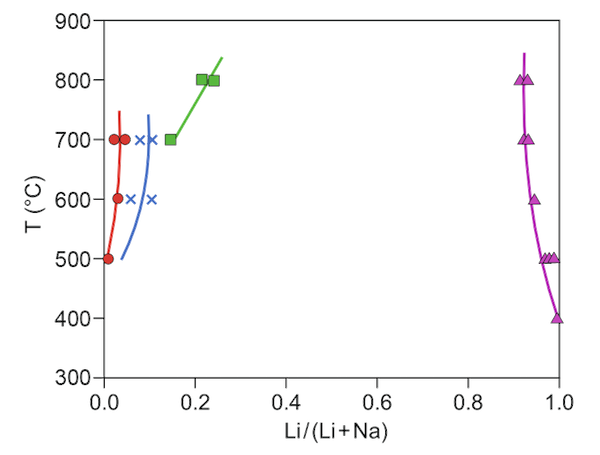
Temperature dependence of the Li/(Li+Na) ratios, for the phosphates synthesized in the LiNa2MnxFe3-x2+ Fe3+ (PO4)4 (x = 1.054, 1.502, 1.745), system, obtained by using SIMS to measure Li, with the development of the Na-in-triphylite geothermometer. Circles = alluaudites, triangles = triphylite, squares = X-phase, crosses = maricite (Hatert et al., 2011).
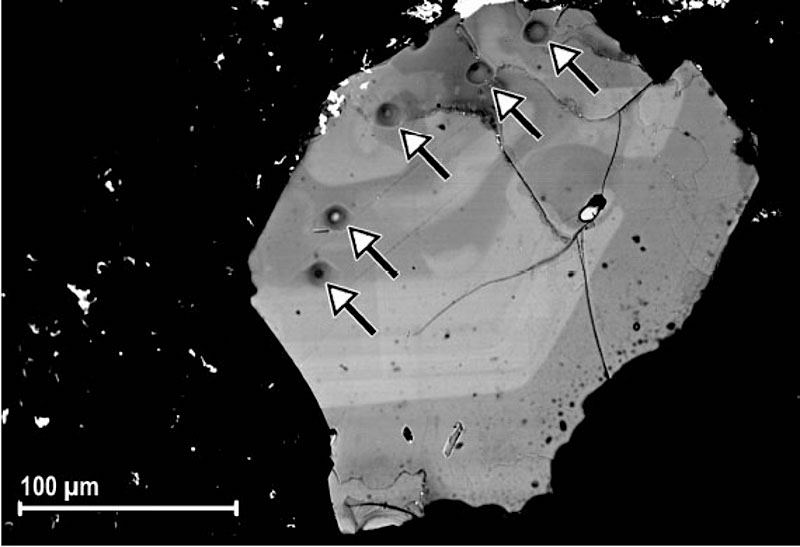
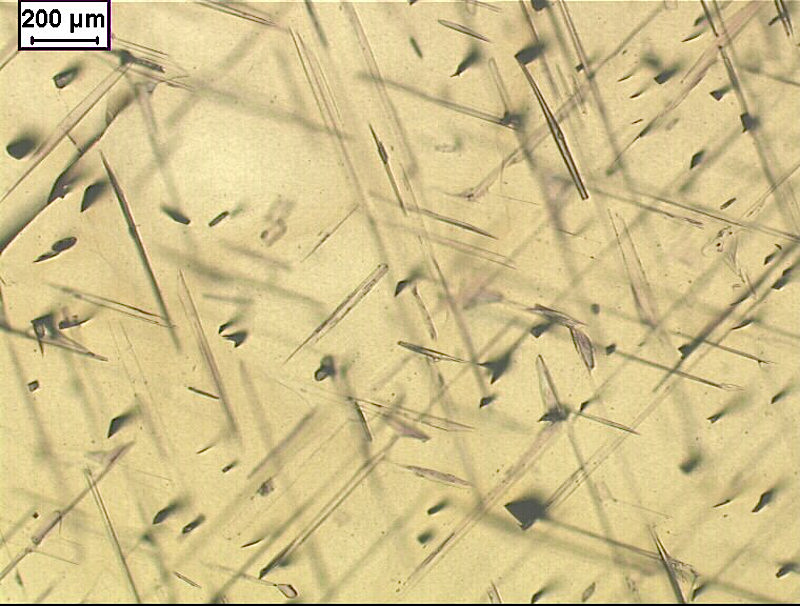
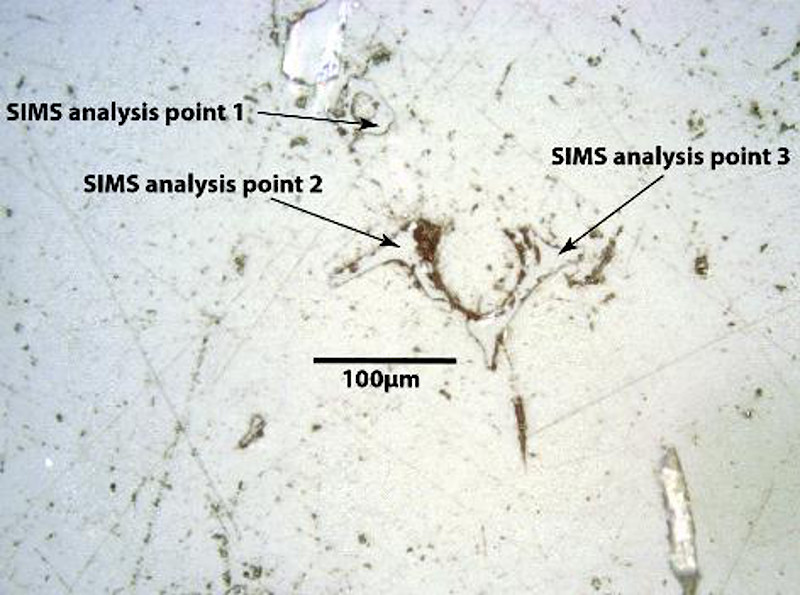
Micrograph of volcanic shards analyzed with the ion microprobe in Pavia, within the Consortium RESET (= Response of Humans to Abrupt Environmental Transitions, (http://c14.arch.ox.ac.uk/reset/embed php? file = index.html). On the tiny shards, embedded in epoxy resin and polished, the zones selected for ion bombardment are indicated by arrows. The SIMS technique was the only one able to perform quantitative analysis of trace elements (ppm-sub ppm) of small size micro-areas, at the limit of the potentialities of the supplied CNR apparatus.
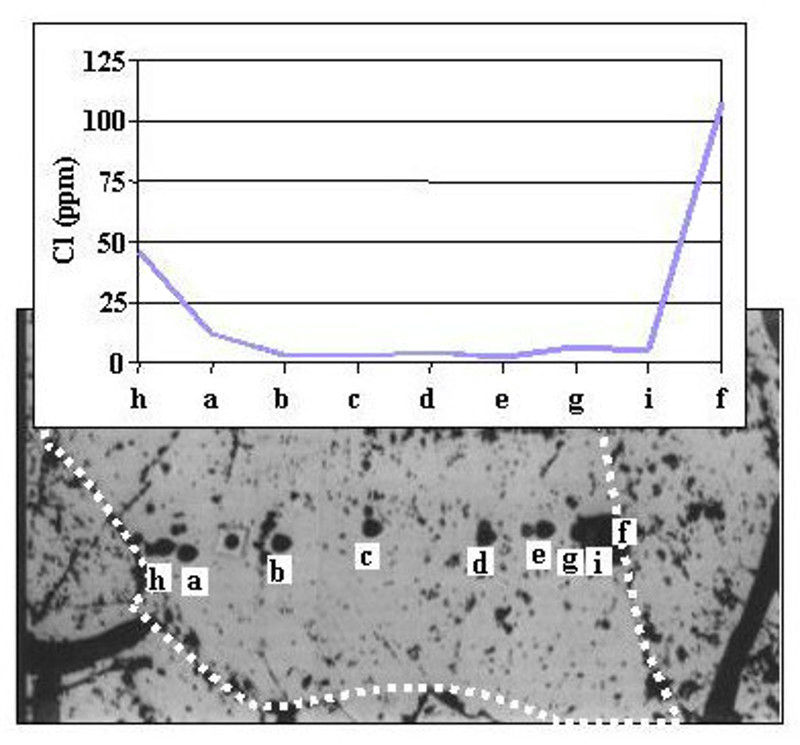
RECENT PROJECTS
- Development of analytical methods for the measurement of:
- trace constituents in volcanic shards (Consortium RESET);
- H, F and C in porous minerals (Prin 2008 “Compositional and structural characteristics of minerals of applicative interest: sodalites and cuspidines of Somma-Vesuvius").
- Optimization of SIMS procedures for the quantitative analysis of :
- Li, Be, B and volatiles (H, F, Cl) in the study of the mica crystal-chemistry;
- Rare Earths in decompression structures in samples of orogenic peridotites (Western Norway).
- Development of SIMS methods for the measurement of Li and Be in Be-Li phosphates and Be-phosphates.
- Analytical collaboration to:
- Bando 2013 PNRA "Stability of hydrous phases in the lithospheric mantle of the great systems of continental rift: a petrologic and experimental approach of nodules and basic lavas of Northern Victoria land";
- Bando PRIN (2014-2016, prot. 20125JKANY): "Birth of an ocean in the Red Sea: geodynamics, geochemistry and high-resolution plate kinematics".
SCIENTIFIC INTERESTS
- Study of the SIMS matrix effects for light and volatile elements in phosphates
- Development of quantitative procedures for volatiles (H, C, F, Cl) in apatites
- Improvement of precision and accuracy in the analysis of trace constituents (sub ppm wt concentrations) in mineral and glass (< 10 µm size)
- Quantitative analysis of H in very low H2O silicates and H investigation in nominally anhydrous minerals.
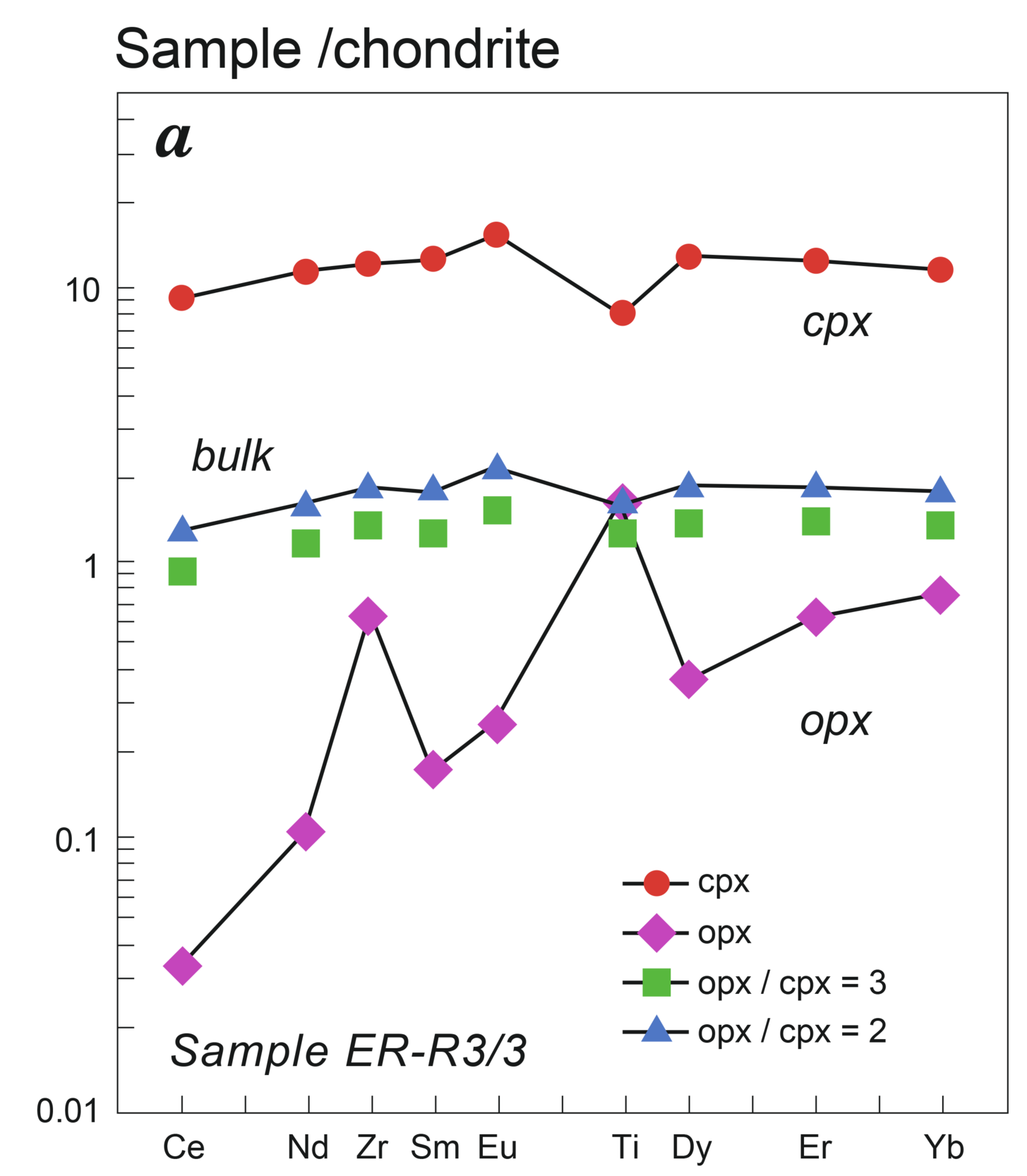
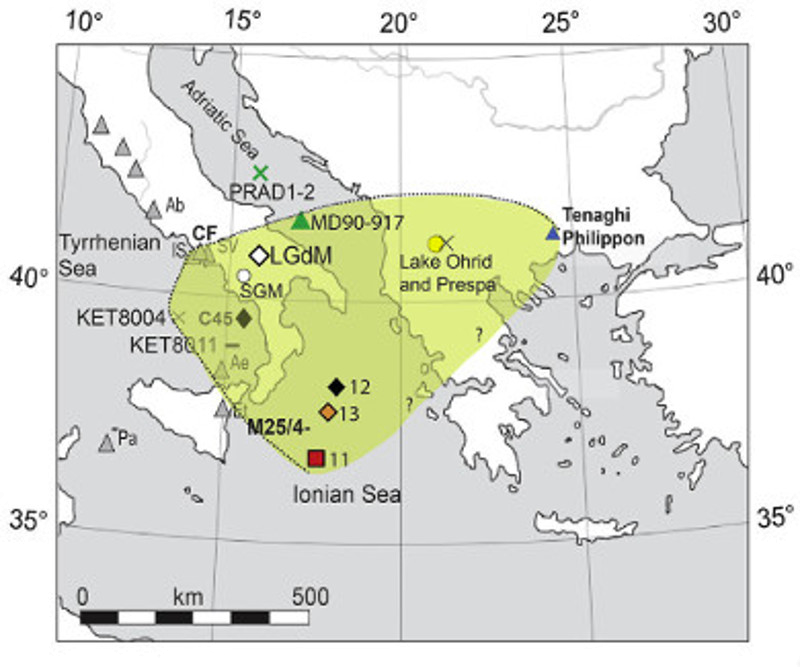
By means of SIMS analysis it was identified and characterized for the first time the geochemically cryptotephra TP 9.70 from the terrestrial site of Tenaghi Philippon (Greece NE), which showed a compositional range consistent with that of the tephra Y-3 (indicated in the map by M25 / 4-12), compatible with a source in the Campi Flegrei (CF). This correlation extends the dispersion of tephra Y-3 in the east, more than 800 km from the CF, and implies that the area affected by the deposition of volcanic dust is greater than 550,000 km2 (Albert et al., 2015).
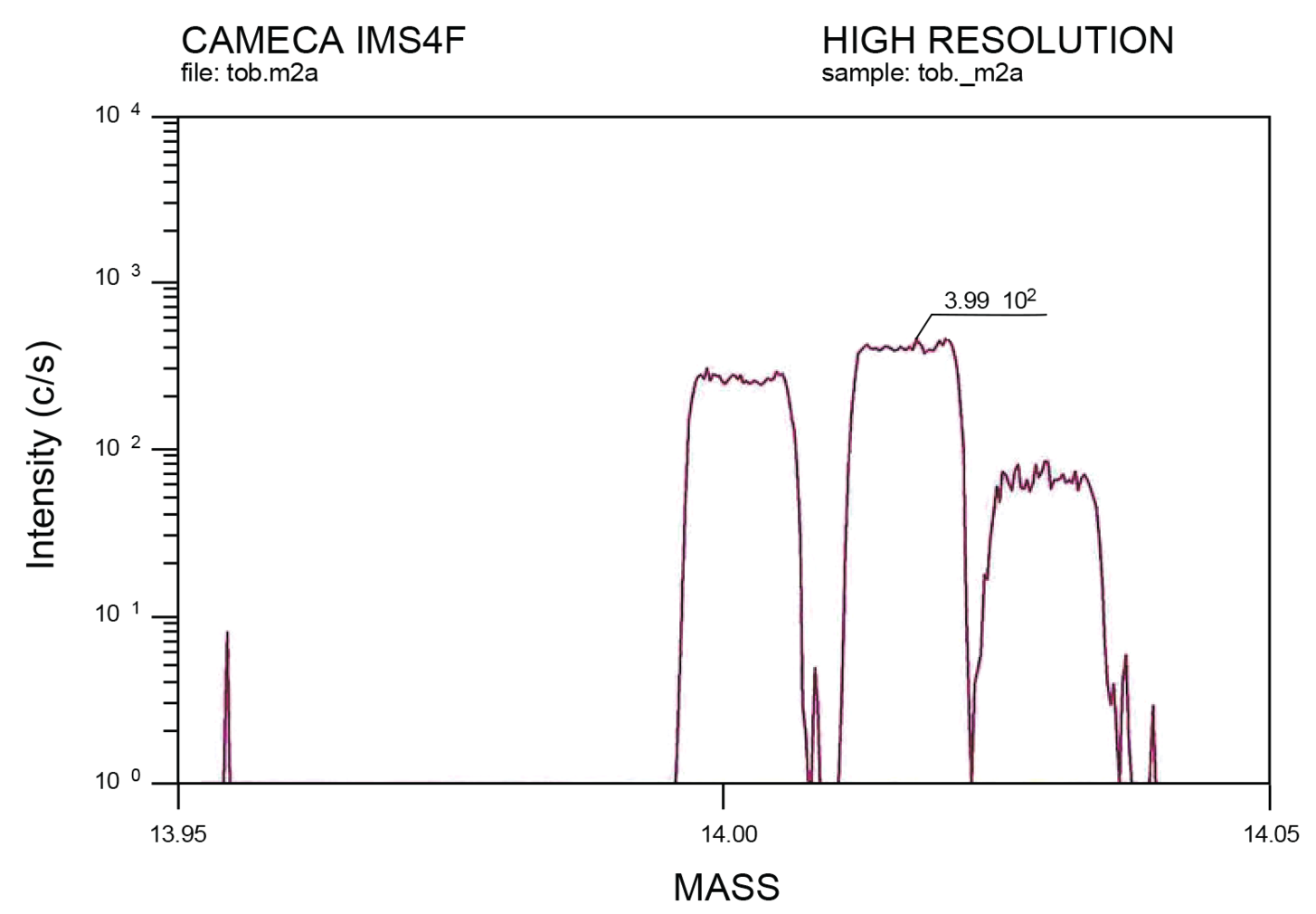
First direct evidence of nitrogen (14N+) in mica samples (tobelite), obtained with the ion microprobe in Pavia at a mass resolving power of 1250 (M/ΔM). We can see the resolved peaks (from left to right): 28Si2+, 14N+ e 12CH2+ (Ottolini et al., 2014). The results of the study emphasize the capabilities of SIMS in the in-situ analysis of N and point out the possibility to develop reference materials (standards) for quantitative SIMS analysis of nitrogen in the ammonium- micas.
SELECTED PUBLICATIONS
- Rampone E., Bottazzi P., Ottolini L.: Complementary Ti and Zr anomalies in orthopyroxene and clinopyroxene from mantle peridotites, Nature, 354, (1991), 518-520.
- Ottolini L., Bottazzi P., Vannucci R.: Quantification of Lithium, Beryllium and Boron in Silicates by Secondary Ion Mass Spectrometry Using Conventional Energy Filtering, Anal. Chem., 65, (1993), 1960-1968.
- Ottolini L., Bottazzi P., Zanetti A., Vannucci R.: Determination of Hydrogen in Silicates by Secondary Ion Mass Spectrometry, The Analyst, 120, (1995), 1309-1313.
- Schiano P., Clocchiatti R., Ottolini L., Busa’ T.: Transition of Mount Etna lavas from a mantle-plume to an island-arc magmatic source, Nature, 412, (2001), 900-904.
- Bonatti E., Ligi M., Brunelli D., Cipriani A., Fabretti P., Ferrante V., Gasperini L., Ottolini L.: Mantle thermal pulses below the Mid-Atlantic Ridge and temporal variations in the formation of oceanic lithosphere, Nature, 423, (2003), 29 May Issue, 499-505.
- Ottolini L., Le Fevre B., Vannucci R.: Direct assessment of mantle boron and lithium contents and distribution by SIMS analyses of peridotite minerals, Earth Planet. Sci. Lett., 228, (2004), 19-36.
- Schiano P., Clocchiatti R., Ottolini L., Sbrana A.: The relationship between potassic, calc-alkaline and Na-alkaline magmatism in South Italy volcanoes: A melt inclusion approach, Earth Planet. Sci. Lett., 220, (2004), 121-137.
- Scambelluri M., Müntener O., Ottolini L., Pettke T.T., Vannucci R.: The fate of B, Cl and Li in the subducted oceanic mantle and in the antigorite breakdown fluids, Earth Planet. Sci. Lett., 222, (2004), 217-234.
- Ligi M., Bonatti E., Cipriani A., Ottolini L.: Water-rich basalts at mid-ocean-ridge cold spots, Nature, 434, (2005), 3 March Issue, 66-69.
- Spengler D., Van Roermund H.L.M., Drury M.R, Ottolini L., Mason P.R.D., Davies G.R.: Deep origin and hot melting of an Archaean orogenic peridotite massif in Norway. Nature, 440, (2006), 913-917.
- Ottolini L. P., Le Févre B.: SIMS analysis of chlorine in metasomatised upper-mantle rocks, Microchim. Acta, 161, (2008), 329-336.
- Pappalardo L., Ottolini L., Mastrolorenzo G.: The Campanian Ignimbrite (southern Italy) geochemical zoning: insight on the generation of a super-eruption from catastrophic differentiation and fast withdrawal, Contrib. Mineral. Petrol., 156, (2008), 1-26.
- Ottolini L., Laporte D., Raffone N., Devidal J.-L., Le Fèvre B.: New experimental determination of Li and B partition coefficients during upper mantle partial melting, Contrib. Mineral. Petrol., 157, (2009), 313-325.
- Scordari F., Dyar M.D., Schingaro E., Lacalamita M., Ottolini L.: XRD, micro-XANES, EMPA, and SIMS investigation on phlogopite single crystals from Mt. Vulture (Italy), Amer. Mineral., 95, (2010), 1657-1670.
- Trua T., Clocchiatti R., Schiano P., Ottolini L., Marani M.: The heterogeneous nature of the Southern Tyrrhenian mantle: Evidence from olivine-hosted melt inclusions from back-arc magmas of the Marsili seamount, Lithos, 118, (2010) 1-16.
- Hatert F., Ottolini L., Schmid-Beurmann P.: Experimental investigation of the alluaudite + triphylite assemblage, and development of the Na-in-triphylite geothermometer: applications to natural pegmatite phosphates, Contrib. Mineral. Petrol., 161, (2011), 531-546.
- Ottolini L., Schingaro E., Scordari F.: Contribution of Secondary Ion Mass Spectrometry (SIMS) to the Study of Crystal Chemistry of mica minerals, Mass Spectrometry Handbook, Chapter 43/Ceramics, (2012), 1017-1059, Ed. Mike S. Lee, JOHN WILEY & SONS, INC., PUBLICATION.
- Ottolini L.P., Scordari F., Mesto E.: A new application of SIMS to the analysis of nitrogen in mica minerals: tobelite, IOP Conference Series: Materials Science and Engineering Vol. 55, conference 1, (2014), EMAS 2013 Workshop: 13th European Workshop on Modern Developments and Applications in Microbeam Analysis, 012014 doi:10.1088/1757-899X/55/1/012014.
- Albert P.G., Hardiman M., Keller J., Tomlinson E. L., Smith V.C., Bourne A.J., Wulf S., Zanchetta G., Sulpizio R., Müller U.C., Pross J., Ottolini L., Matthews I.P., Blockley S.P.E., Menzies M.A.: Revisiting the Y-3 tephrostratigraphic marker: a new diagnostic glass geochemistry, age estimate, and details on its climatostratigraphical Context, Quaternary Science Reviews, 118, (2015) 105-121.
- Barton R.N.E., Lane C.S., Albert P.G., White D., Collcutt S.N., Bouzouggar A., Ditchfield P., Farr L., Oh A., Ottolini L., Smith V.C., Van Peer P., Kindermann K.: The role of cryptotephra in refining the chronology of Late Pleistocene human evolution and cultural change in North Africa, Quaternary Science Reviews, 118, (2015) 151-169.